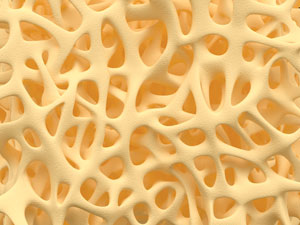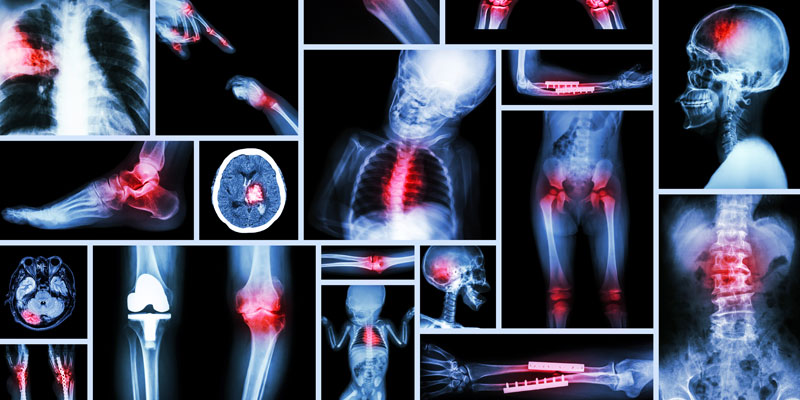Liz Tanner FREng FRSE is Professor of Biomedical Materials (and Head of Biomedical Engineering Teaching Discipline) at the University of Glasgow. Her research interests are the development and use of bioactive materials for bone augmentation and replacement. In parallel she has been involved in projects on the mechanical properties of bone and the effects of pathology, having published over 160 papers in this field and edited three books.

Liz spoke about “New bones for old; Developing materials to replace human bone” at the Soapbox Science event in Glasgow on Sunday 7th June 2015.
Combining my two interests in medicine and engineering through biomedical engineering
At school I could not decide between medicine and engineering for my career. I decided on engineering, but realised that with my two interests could be combined by doing biomedical engineering. At the time biomedical engineering was a very new subject and really only available as a research area within certain universities, one of which was Oxford. I therefore applied to Oxford and in the summer vacation at the end of my second year found myself a placement in the Oxford Orthopaedic Engineering Centre.
OOEC is an usual place in that it is part of the Department of Engineering Science of the University, but physically based on the Nuffield Orthopaedic Centre’s hospital campus. I was working on a project to help develop a method of treating complex fractures, the surgeons and the patients coming in for their treatment were on the same site.
Engineering improving the lives of patients
This time really showed me the input that engineers could make to improve the life of patients, both directly and indirectly. After that I was offered a place to do a Ph.D. [Doctor of Philosophy] continuing on from this project, but using the system to measure how well individual patients’ fractures were healing.
No reason women could not do a job as well as a man
Once I finished my Ph.D. I got a one year post-doctoral job at Queen Mary University of London. I had not realised when I accepted the post that Professor Bonfield had two daughters as well as a son and did not see any reason why women could not do a job as well as a man. He therefore was (and still is) very supportive to women and many of his ex-Ph.D. students and post docs have risen fast in academia.
My one year job was immediately followed be a series of two year contracts, then a five year Research Council Fellowship, University lectureship etc., until in 1998 I was appointed a Professor of the University of London. In the meantime the group had won the bid to host the Interdisciplinary Research Centre in Biomedical Materials, so were effectively the UK national centre for biomaterials for 1991 – 2001.
The first undergraduate Biomedical Engineering degree in Scotland – over 40% women
In 2007 I moved to the University of Glasgow with the job title Professor of Biomedical Materials. While I have been in Glasgow I have continued with my research developing biomaterials and I have also started the first undergraduate Biomedical Engineering degree in Scotland. We will have our first major cohort of graduates this summer. One great thing about Biomedical Engineering is that we have over 40% women on the degree.
How biomedical materials are used and how they are helping improve the lives of patients
Biomedical materials are any sort of material used in or on the body. So they can range from as simple as a plaster for a cut through to a stent to treat narrowing of the arteries that releases a drug to stop the artery re-narrowing, or a scaffold that will encourage bone cells to come to gap in bone left after a major accident or removal of a tumour and then to get new bone to grow the space left.
My research is based on composites which is where two sorts of materials are combined to make a third material. I work on polymer-ceramic composites. We all know that a plastic bag can be pulled a long way before it finally breaks, but is very flexible, while a coffee cup is rigid, but if dropped shatters.
Composites: Combining two sorts of materials to get a third material that bone cells recognise
As material scientists we define the polymer as flexible and tough, while the ceramic cup is stiff and brittle. So either of these materials on their own is not good as a bone replacement material except in specific uses. However, if we combine the two we get a material that is medium stiff and reasonably tough and if we use a ceramic called hydroxyapatite we also get a material that bone cells recognise.
Bone mimics

The material we developed and manufactured in London in the 1990s had the trade name HAPEX and was used in about half a million middle ear implants. As an ear implant we need this material to stay unchanged for the rest of the patient’s life. HAPEX allowed half a million people to hear again.
New implants that can be gradually resorbed by the body once no longer needed
What I am now working on is materials for different applications such as the bone defect problem, where the material can be placed in the body and then gradually be resorbed by the body. Once the bone has healed we no longer need the implant. The polymers we use slowly convert into things like lactic acid (which occurs naturally in our bodies after a lot of exercise), which the body can then break down into carbon dioxide and water and process.
Objectives in my current role
I would like to get a material in clinical use that will allow major defects in bone to heal quickly and efficiently. My part of this project is developing and mechanically testing the materials to get a biodegradable material developed, tested and into people.
Colleagues then progress to the biological testing where they grow cells on the material to see how we can tailor the material to be as attractive to the cells we want, other colleagues in the University of Glasgow are clinicians who run clinical trials of the material as a device Finally, we need to work with a company to get it into patients.
Nothing to say women cannot do science and engineering: A waste of very good brains
Half the population is female, so if they are not doing science and engineering half the available brains are not being used. It is a waste of very good brains. There is nothing to say that women cannot do science and engineering.
In many countries of the world there is no gender imbalance in engineering but there still is in the UK. The option that engineering is “not for girls” is breaking down. The Royal Academy of Engineering now has a female President, Dame Anne Dowling, various of the Engineering Institutions have had a female President. The more women who are seen to be engineers, the less girls will not think it is for them.
In the 1980s in London for about five years we ran a “Girls into Engineering” conference. I remember the first year phoning companies and saying we needed them to bring a stand with some female engineers. Initially the responses were, “Yes, we should be able to find one or two.” Five years later the response had changed to, “How many would you like?” It is getting much better, but it still not right.
Women becoming Professors
Probably the major barrier is a lack of either self confidence or self promotion. There are men who spend a lot of time and effort telling everyone how wonderful they are, whereas many women are inclined just get on doing an excellent job and fail to self publicise.
Of course, many women take the primary child care or parental care roles in a family and this limits their time and travel opportunities to attend conferences etc. and thus build up their international reputation and links.
Reinforcing that being contracted to work 50% of the time should actually mean being expected to work 50% of the time, not full time
I can think of someone I shared an office with – once she had children she worked 50% time, but had to convince promotion committees that while someone working full time should have so many papers and so much grant income to be promoted to the next level, she was half time and thus for her 50% was required. She did succeed and became a professor, but it did require people to remember that she was a working 50% time person.
Applying for Soapbox Science
I thought it would be an interesting experience and I do enjoy telling people what I do and why it is important. I will be talking about bone as a material and the degradable materials I’m working on to replace it.
In no more than three words, what to expect from my Soapbox Science session:
Broken bones repaired. Find out more here.
http://www.gla.ac.uk/schools/engineering/staff/ktanner/
https://twitter.com/glasgowuni





